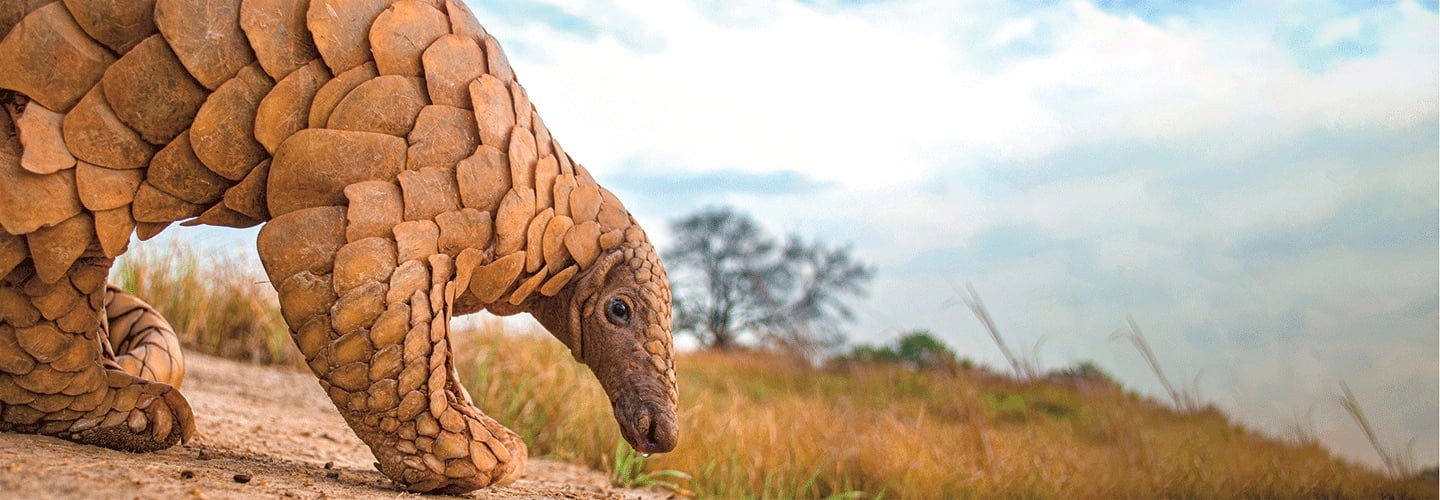As night fell, Harriet Nimmo and an armed guard walked quietly through Kruger National Park in South Africa. They were protecting a small wild animal called a pangolin as it fed on ants. This shy nocturnal mammal is the size of a housecat. There are eight types of pangolins in Africa and Asia.
They look like anteaters but are covered with protective scales. The pangolin walking with Nimmo, named Aura, was rescued from captors by police. They brought Aura to Rhino Revolution, where Nimmo worked. Nimmo is a conservationist who helps care for rescued wild animals. At the time, Rhino Revolution worked to save not only rhinos, but pangolins too.
Unfortunately, the scaly armor that covers Aura and all pangolins cannot protect them from poachers. These people traffic, or illegally trade, wildlife. Pangolins are the most trafficked mammal in the world. They are prized for their meat and scales. Millions are captured or killed each year. But conservation groups are trying to save pangolins from extinction.

